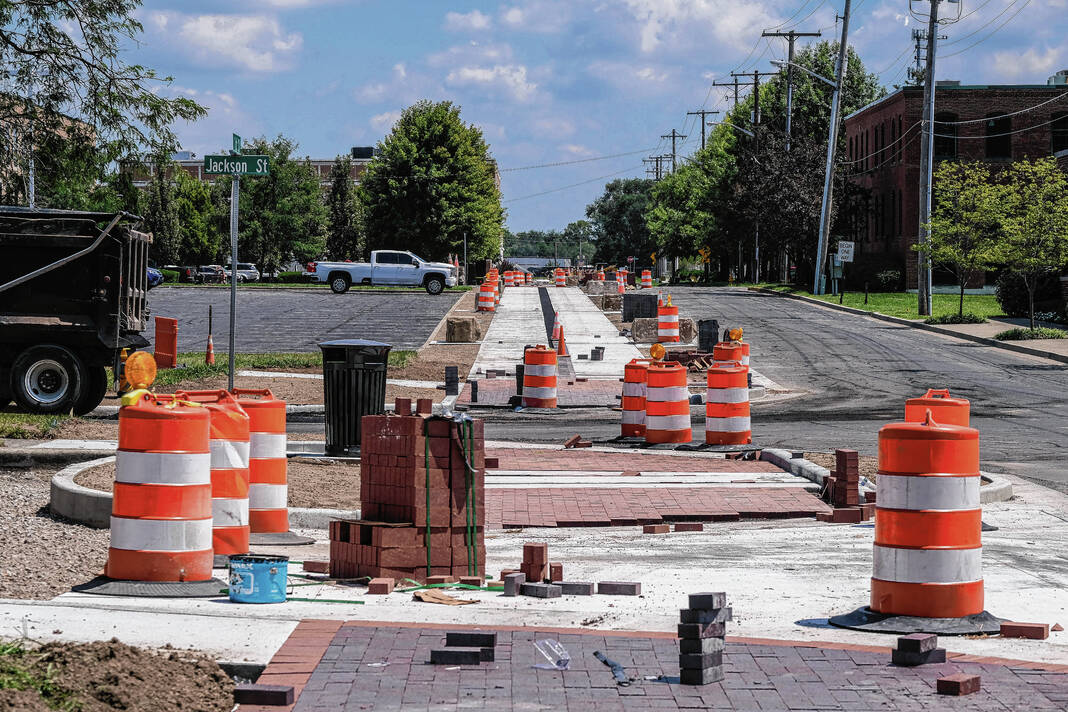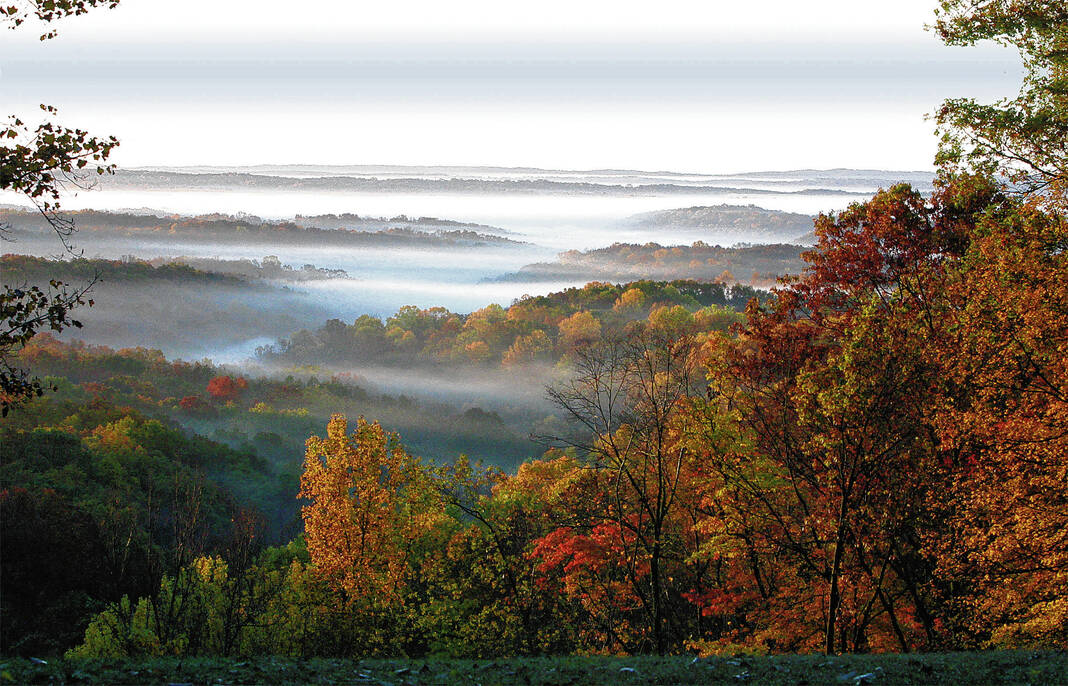Get ready for what may be the steamiest weekend in five years.
A heat wave that arrived Thursday is expected to linger across Bartholomew County through Sunday, according to weather services.
Thursday’s high temperature in Columbus was expected to reach 94, followed by 95 today and Saturday, then 93 degrees on Sunday — well above the historical average of 86 — before dropping back into the 80s as the new week begins, according to the Accuweather service.
The threat for heat stress and heat-related illness will remain high as peak afternoon heat index values climb as high as 105 degrees today and Saturday, meteorologists warn.
[sc:text-divider text-divider-title=”Story continues below gallery” ]
Under such conditions, emergency room personnel at Columbus Regional Hospital are expecting to treat elderly patients without home air conditioning, said Dr. Kevin Terrrell, medical director of emergency services.
“Older people are also at greater risk of heat illness because they may be on diuretics that increase their risk of dehydration,” Terrell said. “Many older people don’t drink enough water, and another issue is that their bodies cannot adapt to the heat as well as a younger person’s.”
Mid-summer heat is not that unusual. On average, south-central Indiana residents experience about 19 days a year when the temperature reaches 90 or higher, according to meteorological records.
Feeling the heat
Compared to 32 consecutive 90-degree days in 2012, this five-day run of 90-degree temperatures may be considered ‘no sweat’ by some. But one of the area’s largest road-construction firms, which is laying 300-degree asphalt on county roads, is taking this week’s heat wave seriously.
“We’ve been monitoring this for several days, and it is something to be concerned about,” said Mark Thompson Sr., vice president of Milestone Contractors, which employs more than 100 road crew workers in the Columbus area.
At the beginning of each construction site shift, every crew member is briefed on the day’s safety concerns. During a heat wave, supervisors encourage their workers to either consume sports drinks or put electolyte powder into their drinking water, Thompson said.
Extra breaks are worked into the shifts, which are often moved up a few hours so that employees can quit for the day by 3 p.m., he said.
On large projects such as bridge deck replacements during exceptionally hot days, workers arrive hours before dawn so they can finish by mid-morning — prior to the hottest part of the day, Thompson said.
While putting new asphalt on County Road 425E west of Hope on Thursday, Milestone site supervisor Jay Grissom said he and his crew will have to work into the weekend after rain storms left them behind schedule.
Grissom remembers when he began working for Milestone in 1994, he wanted to impress his bosses and show up his co-workers. But when his own ambition and drive clashed with a heat wave, Grissom said that was the only time he became so ill that he had to be sent home.
“You have to learn early that can happen to the best of us, old and young,” 20-year Milestone employee James Jackson said . “You may get used to the heat, but it’s never stops being hard and it always wears you out.”
Experience has taught Jackson if someone ignores the symptoms of a heat-related illness to show how tough or strong they are, that person could risk suffering permanent health damage, he said.
“The human body can get used to heat only up to a point,” Thompson said. “We have to carefully monitor the situation.”
Workers who show signs of heat stress or another heat-related illness are immediately placed into the nearest available air conditioning, he said. If the symptoms warrant, the employee might be sent home to rest, Thompson said.
Due to all these precautions, crew members seldom suffer serious heat-related health risks that causes them to miss any more than a day, Thompson said.
“We rarely see outdoor workers in the emergency room,” Terrell said. “They are generally well prepared to work in the heat.”
But health officials still warn residents — even those fortunate enough to work in climate-controlled environments — to limit their time outdoors during the afternoons.
People planning to beat the heat with a dip in a pool or lake should be aware of another potential danger, meteorologists warn.
Unstable weather conditions are expected to create pop-up thunderstorms throughout the region that should prompt swimmers to seek immediately shelter, according to the National Weather Service.
While these storms could appear without warning through Monday, meteorologists say they do not expect it will rain anywhere in the Columbus area for large portions of any day.
Forecasters say temperatures will cool to near normal readings by Monday and Tuesday as the air mass changes with the passage of a cold front.
[sc:pullout-title pullout-title=”Heat wave tips ” ][sc:pullout-text-begin]
Most of the heat-related illnesses seen at Columbus Regional Hospital could be prevented with simple actions. The main recommendation is to stay out of the heat if possible. However, people who must be outside are advised to take the following preventive steps.
- Drink plenty of water and stay in the shade as much as possible.
- Put sunscreen on exposed parts of the body.
- Wear hats and light-colored clothing to reflect the heat as much as possible.
Advisories issued by the National Weather Service urge all residents to check up on the elderly, as well as people without air conditioners.
A special emphasis is being made to not leave a child or pet in a parked vehicle, where temperatures can quickly become lethal.
Source: Dr. Kevin Terrell, medical director of emergency services
[sc:pullout-text-end][sc:pullout-title pullout-title=”Most common, dangerous heat-related illnesses” ][sc:pullout-text-begin]
Heat cramps: This is the mildest of heat-related illnesses. People with heat cramps generally get out of the heat, drink plenty of water, and rest. Most often, they do fine after self-treatment at home.
Heat exhaustion: The second stage of heat illness often requires medical attention. People may develop muscle cramps, dizziness, nausea and headaches. These patients need intravenous fluids and often nausea medicine. Patients generally recover fully from heat exhaustion.
Heat stroke: The most serious stage of heat illness is found in people who have very high temperatures and experience confusion, lack of sweating and vomiting. These patients require cool intravenous fluids, rapid cooling of their bodies, and often a ventilator because of their severity of illness. In severe cases, they can develop swelling of the brain and organs can shut down and fail. It is often lethal, despite the best care.
Source: Dr. Kevin Terrell, medical director of emergency services at Columbus Regional Hospital.
[sc:pullout-text-end]








